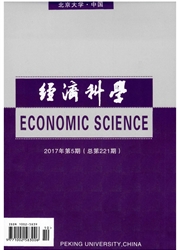

 中文摘要:
中文摘要:
文章试图通过对2006年3季度中国人民银行实施央票工具调控目标转变这一政策事件的观察,展开了我国货币政策操作程序的演化分析,同时还基于我国货币政策操作实践,通过设计实证框架,对当前货币政策操作程序下货币市场利率波动的传递性进行研究。研究表明,随着利率形成机制从单一行政管制向双轨制过渡,货币政策操作程序已初步实现了从准备金总量程序向利率程序演化。并且,在利率双轨制约束的操作程序下,人民银行能够稳定市场预期,引导货币市场利率,有效降低市场利率波动的传递性。
 英文摘要:
英文摘要:
The paper investigates the evolution of China monetary policy operating proce- dures, after observing the policy event of transformation of central bank bill target in the third quarter of 2006. The empirical framework is constructed to analyze the transmission of volatility in money market rates based on the monetary policy practice. It is found that monetary policy operating procedures has transformed from aggregate reserve procedures to interest rate procedures, with the transition of the interest rate formation mechanism from the administrative control to the double track system. And also, the transmission of volatil- ity in money market rates can be reduced, due to the fact that the China People's Bank sta- bilizes market exoectation and guides the monetary market interest rates.
 同期刊论文项目
同期刊论文项目
 同项目期刊论文
同项目期刊论文
 期刊信息
期刊信息
